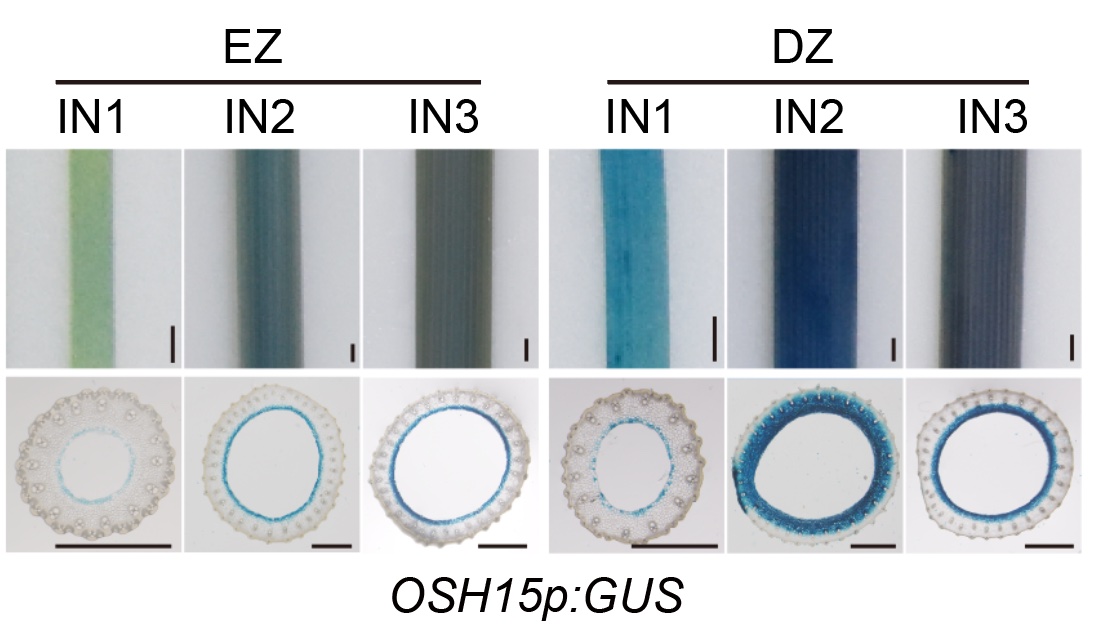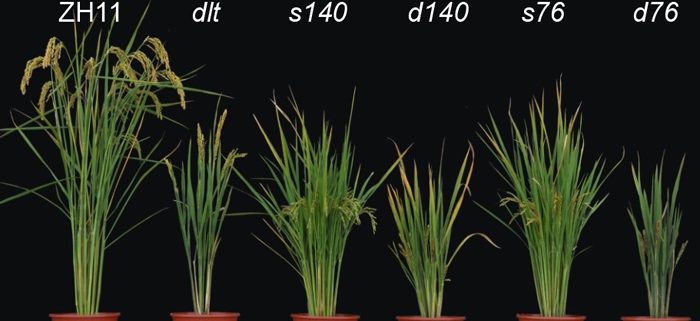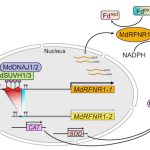Brassinosteroids in the organization of rice internodes
Niu et al. discovered how the organization of rice internodes is regulated by the steroid hormone brassinosteroid. The Plant Cell (2022)
By Mei Niu and Hongning Tong
Background: Rice culms consist of 5–7 internodes and the length of these internodes determines plant height and resistance to wind, which is crucial for field performance. Brassinosteroid (BR) plant hormones are involved in regulating plant height because defects in BR synthesis or signaling (such as mutants in the BR receptor gene BRASSINOSTEROID INSENSITIVE 1 (OsBRI1)) usually result in dwarfism with specific shortening of the lower internodes or the 2nd internode (IN2) compared to that of the uppermost/1st internode (IN1). This pattern is known as d6 or dm-type dwarfism.
Question: We wanted to know how BRs are involved in organizing the different internodes and therefore, we carried out a large-scale screen for mutants with altered internode organization pattern using the mild BR signaling–defective mutant dwarf and low-tillering (dlt).
Findings: We identified two mutants showing specific shortening of the lower internodes, i.e., d6-type dwarfism. Both mutants have the same causal gene, namely, OSH15, which encodes a homeodomain-containing protein. OSH15 can directly interact with DLT, forming a protein complex to regulate BR contents and BR signaling. For example, DLT-OSH15 directly binds the promoter of OsBRI1 to promote gene expression. OSH15 expression is strong in the lower internodes, particularly in IN2, and DLT shows an opposite expression pattern. Therefore, the protein complex has different levels in different internodes, exerting different effects on BR levels and signaling to modulate internode organization.
 Next steps: Scientists aim to use BR-related genes to engineer plant height and grain size and thus produce new crops having improved grain yield and lodging-resistance. The discovery of the DLT-OSH15-OsBRI1 module could help achieve this goal. Next, we will try to uncover how BRs coordinate internode elongation with panicle development.
Next steps: Scientists aim to use BR-related genes to engineer plant height and grain size and thus produce new crops having improved grain yield and lodging-resistance. The discovery of the DLT-OSH15-OsBRI1 module could help achieve this goal. Next, we will try to uncover how BRs coordinate internode elongation with panicle development.
Reference:
Mei Niu, Hongru Wang, Wenchao Yin, Wenjing Meng, Yunhua Xiao, Dapu Liu, Xiaoxing Zhang, Nana Dong, Jihong Liu, Yanzhao Yang, Fan Zhang1, Chengcai Chu, Hongning Tong (2022). Rice DWARF AND LOW-TILLERING and the homeodomain protein OSH15 interact to regulate internode elongation via orchestrating brassinosteroid signaling and metabolism. https://doi.org/10.1093/plcell/koac196




